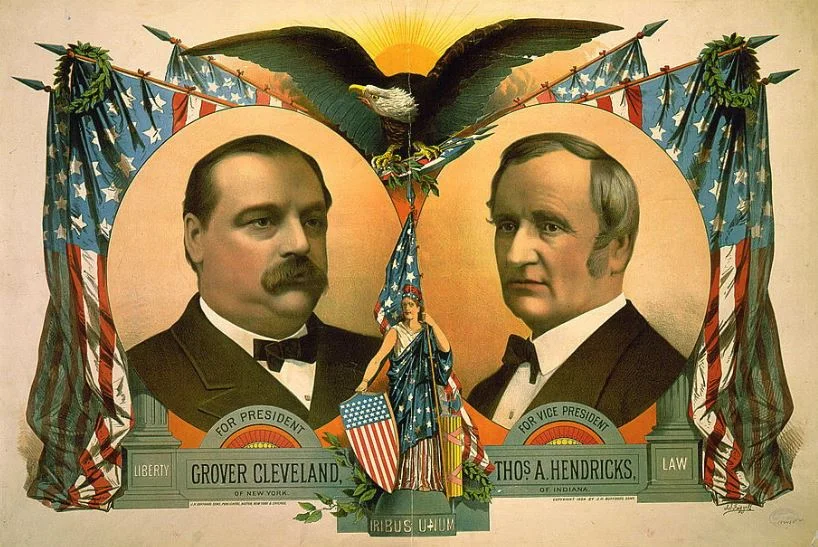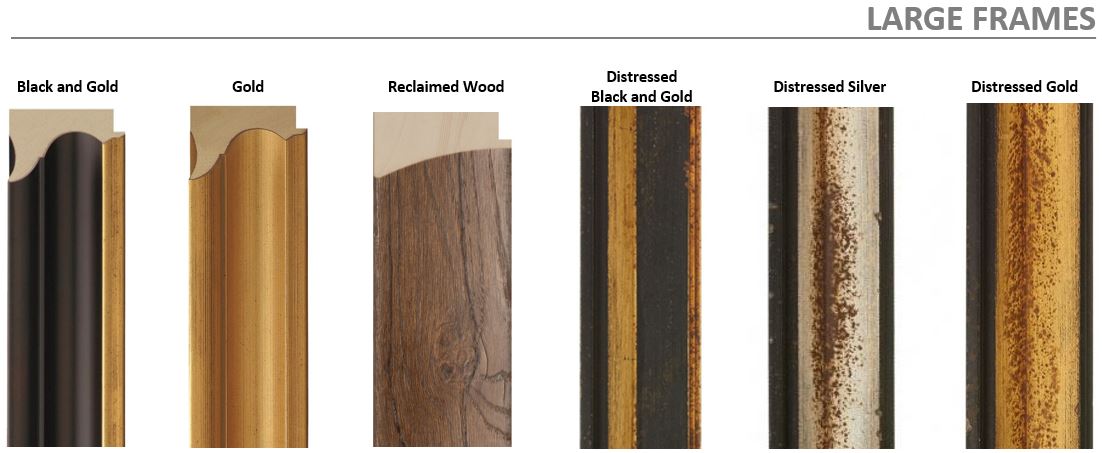Antique Grover Cleveland Campaign Flag | Features 38 Stars in a Medallion Configuration | Circa 1884
Antique Grover Cleveland Campaign Flag | Features 38 Stars in a Medallion Configuration | Circa 1884
Frame Size (H x L): 28” x 37”
Flag Size (H x L): 18” x 27”
Offered is an antique Grover Cleveland campaign flag, printed on cotton. The canton features a portrait of Cleveland. He is surrounded by a ring of stars. And the ring is surrounded by flanking stars, four in each corner of the canton.
Below the canton is a patent marking stating that this design was patented on September 4th, 1883. Nineteenth century patent records are difficult to research, and thus we were unable to find this particular patent. However, it would have covered the basic appearance of this flag (i.e., a presidential candidate, in the canton, with the illustrated star configuration).
The canton rests on a red stripe, instead of a white stripe as generally is standard. This red stripe may be referred to as a war stripe or a blood stripe. In some instances, the war stripe was purposely placed under the canton and symbolized that the nation was at war. In other instances, a red stripe under the canton may have just been placed there on accident, as someone not familiar with the details of the flag had a 50-50 chance of placing the canton and stripes correctly. In the case of this flag, the latter explanation is likely the accurate one.
This flag was manufactured in a reverse mount orientation. A reverse mount is one in which the canton of a US flag is positioned in the upper-right corner. Current flag ethics state that the canton should always be placed on upper-left, but such a requirement did not exist in the 19th century. For this reason, some antique flags display best in a reverse mount, including flags that have printing and images on one side, and flags that are more visually attractive on one side.
Cleveland was the presidential nominee for the Democratic Party in 1884, and he ran against James G. Blaine, who was the nominee for the Republican Party. Cleveland defeated Blaine. Cleveland won 219 electoral votes and 48.9% of the popular vote, while Blaine won only 182 electoral votes and 48.3% of the popular vote.
An example of this flag is documented in the Threads of History. It is featured as item 525 and was held in the Michael DiSalle Collection. While the canton of this flag features Cleveland, another similar flag features his running mate, Thomas Hendricks (item 526). In addition, there is a similar flag that features Blaine (item 527), and yet another that features his running mate, John A. Logan (item 528). The Threads of History was written by Herbert Ridgeway Collins, who was the curator of the Division of Political History at the Smithsonian Institute. His book documents important political textiles, and includes over fifteen-hundred examples, dating from 1775 to 1979.
In addition to being featured in the Threads of History, an example of this flag was also held in the Mastai Collection. It went on to be offered as lot 111 in the October 10th, 2002 Sotheby’s Important Americana Auction. In the Auction, the Cleveland Flag was paired with the Hendricks flag.
The thirty-eight star flag represents the inclusion of Colorado to the Union. Colorado was admitted on August 1st, 1876 and this flag became official on July 4th, 1877. Presidents Hayes, Garfield, Arthur, Cleveland, and Harrison all served under this flag. Colorado became known as the “Centennial State,” a result of becoming official just twenty-eight days after the centennial. The official star count for US flags in 1876 was the thirty-seven star flag. However, it was common for flag makers to produce anticipatory flags in advance of their official date, making the thirty-eight star flag—and for historical reasons, the thirteen star flag—the most common flags flown during the centennial celebrations of 1876.
The thirty-eight star flag was official until July 4th, 1890, the time at which the forty-three star flag became official and began to represent the inclusion of North Dakota, South Dakota, Montana, Washington, and Idaho to the Union.
Conservation Process: This flag was hand sewn to cotton fabric, and both were hand sewn to a mounting board. To prevent the black dye in the cotton fabric from seeping into the flag, it was first washed in a standard wash and then in a dye setting wash. The flag is positioned behind Conservation Clear Acrylic (standard) or behind Optium Museum Acrylic (per request).
Frame: This offering is in our Large Distressed Black and Gold Frame. However, it can be reframed and would look great using any one of our Medium or Large Frames, which are shown in the final two images. The pricing associated with the different framing options may vary. Reframing of an offering may delay shipment by up to two weeks.
Condition Report: As shown in the photos, this flag exhibits staining, particularly along its fly edge and close thereto. The staining indicates that this flag was rolled and stored for an extended period of time. Still, it is bright and displays well.
Collectability Level: The Best – Perfect for Advanced Collectors
Date of Origin: 1883-1884
Number of Stars: 38
Associated War: The Indian Wars (1860-1890)
Associated State: Colorado















